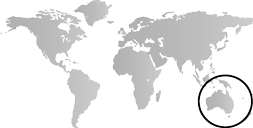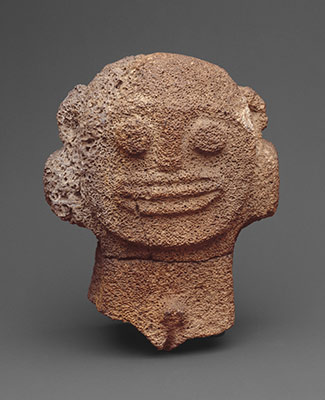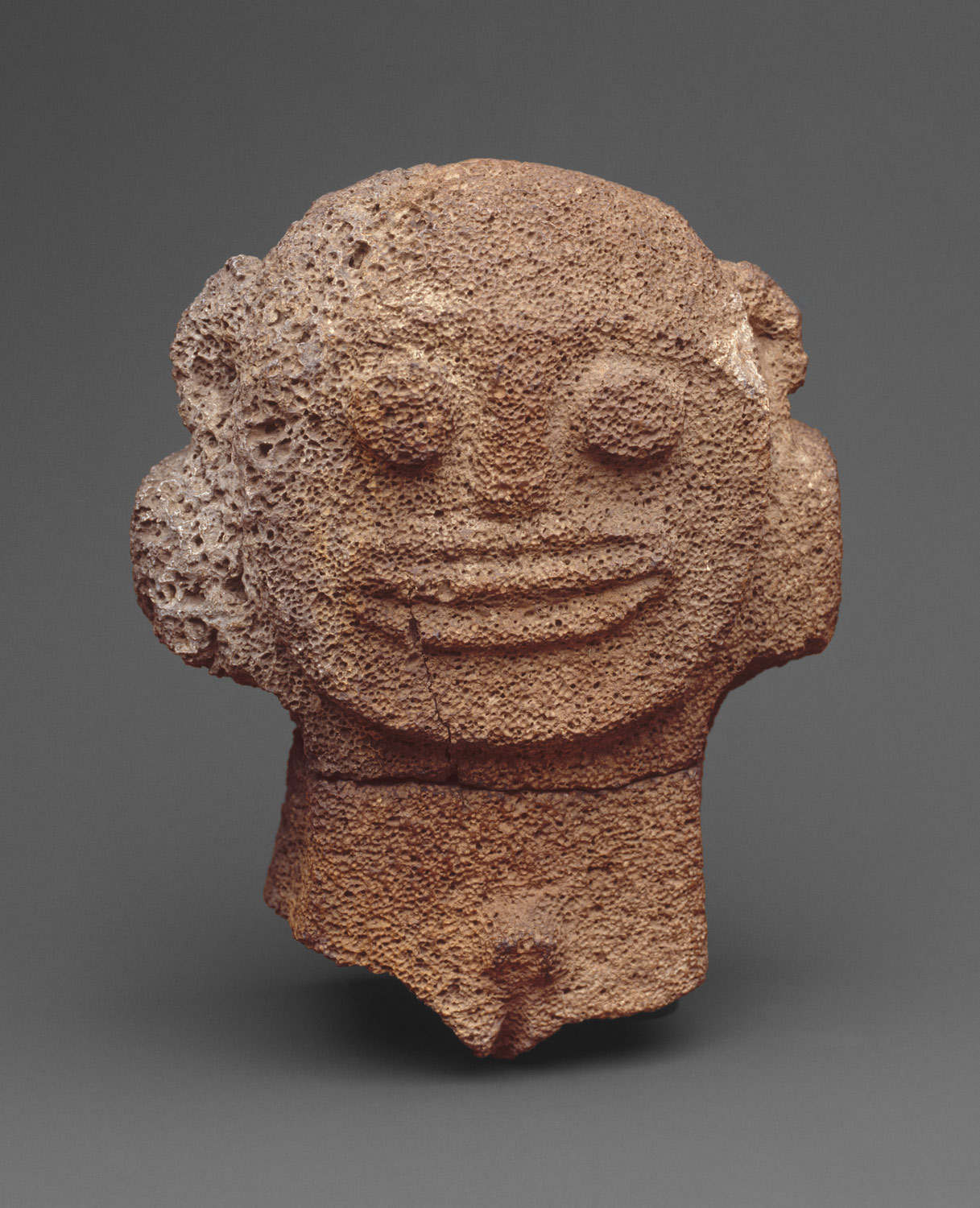As with the preceding eras, our knowledge of the forms and development of Oceanic art from 500 to 1000 remains scant. In Australia, rock art of great intricacy and sophistication continues to be produced, as do the stone figures of the New Guinea Highlands. While the early Sohano ceramic traditions of the Solomon Islands cease around 600, the distinctive Manga’asi pottery of Vanuatu continues throughout the period. In the eastern Pacific, Polynesian peoples continue to explore and colonize previously uninhabited islands and archipelagos, including Hawai’i, Tahiti, and Easter Island (ca. 800), eventually heading southwestward to settle New Zealand around 900–1000. Around 800, the Polynesians of Necker Island near Hawai’i begin to carve distinctive anthropomorphic figures from porous volcanic stone.
Oceania, 500–1000 A.D.
Timeline
500 A.D.
625 A.D.
AUSTRALIA
"X-ray" style in Arnhem Land rock art, ca. 2000 B.C.–present
MELANESIA
Stone figure tradition, New Guinea Highlands, ca. 1500 B.C.–1600 A.D. (?)
Manga'asi period, Vanuatu (New Hebrides), ca. 600 B.C.–1200 A.D.
Sohano period, Solomon Islands, ca. 200 B.C.–600 A.D.
POLYNESIA AND MICRONESIA
Settlement of Eastern Polynesia, ca. 300–800 A.D.
625 A.D.
750 A.D.
AUSTRALIA
"X-ray" style in Arnhem Land rock art, ca. 2000 B.C.–present
MELANESIA
Stone figure tradition, New Guinea Highlands, ca. 1500 B.C.–1600 A.D. (?)
Manga'asi period, Vanuatu (New Hebrides), ca. 600 B.C.–1200 A.D.
POLYNESIA AND MICRONESIA
Settlement of Eastern Polynesia, ca. 300–800 A.D.
750 A.D.
875 A.D.
AUSTRALIA
"X-ray" style in Arnhem Land rock art, ca. 2000 B.C.–present
MELANESIA
Stone figure tradition, New Guinea Highlands, ca. 1500 B.C.–1600 A.D. (?)
Manga'asi period, Vanuatu (New Hebrides), ca. 600 B.C.–1200 A.D.
POLYNESIA AND MICRONESIA
Settlement of Eastern Polynesia, ca. 300–800 A.D.
875 A.D.
1000 A.D.
AUSTRALIA
"X-ray" style in Arnhem Land rock art, ca. 2000 B.C.–present
MELANESIA
Stone figure tradition, New Guinea Highlands, ca. 1500 B.C.–1600 A.D. (?)
Manga'asi period, Vanuatu (New Hebrides), ca. 600 B.C.–1200 A.D.
POLYNESIA AND MICRONESIA
Settlement of New Zealand and Rekohu (Chatham Islands), ca. 900–1200 A.D.
Overview
Key Events
-
ca. 700
The Sumatran kingdom of Shrivijaya extends its trading network as far as the Moluccas and western New Guinea. The cultural links and trade goods exchanged between the kingdoms of western Indonesia and the indigenous peoples of the western tip of New Guinea have a profound influence on the materials and iconography of the art of these peoples, which continues to the present day.
Citation
“Oceania, 500–1000 A.D.” In Heilbrunn Timeline of Art History. New York: The Metropolitan Museum of Art, 2000–. http://www.metmuseum.org/toah/ht/?period=06®ion=oc (October 2001)
Related
Map

Encompasses present-day Australia, island Southeast Asia, and the islands of the tropical north and south Pacific

